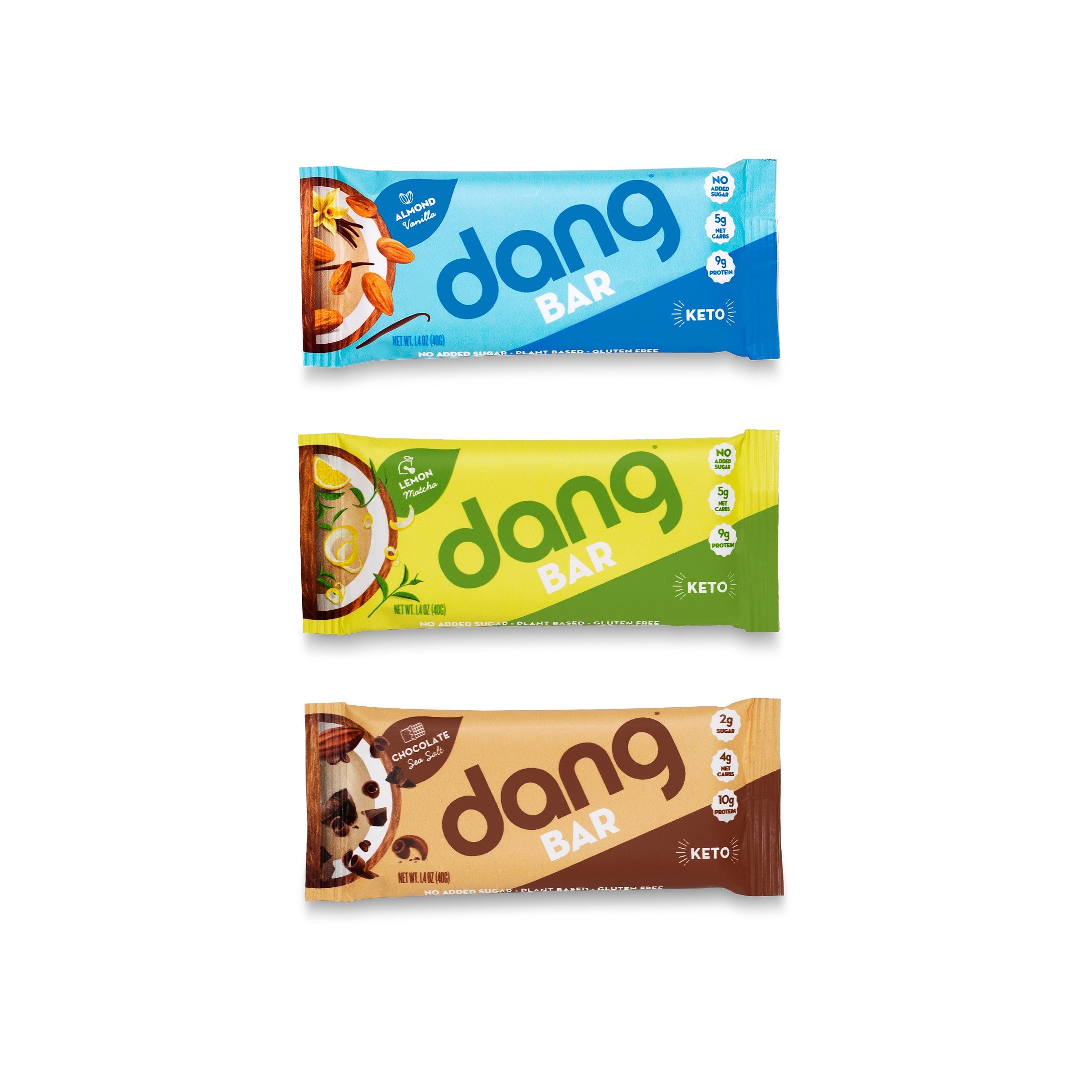Challenger brands are stealing market share from ‘big food’. Over the last two years, in the US alone, the top ten food companies have lost US$20m in revenue to smaller brands. People are seeking out products that they view as authentic and the importance of the story behind a product is rising.
Technological developments are spurring a fundamental shift in how consumers interact with the brands they support and trust, as well as lowering barriers to entry for start-ups. The ability to tell your story transparently has been core to this evolution Dawn Kelley, president and CEO of nut butter maker Barney Butter, observed.
“Transparency and authenticity have gone mainstream. People are much less willing to be kept in the dark on the food they consume, where it’s from, how it’s made, how it’s farmed,” Kelly said.

We caught up with some up-and-coming food brands to hear what trends they believe will gain ground in 2019.
#1: Global flavours
Connected consumers are demanding globally sophisticated flavour profiles.
This is changing how people shop as well as supermarket ranging and procurement strategies. Vincent Kitirattragarn, CEO of Asian snack maker Dang Foods, noted ‘ethnic’ aisles in supermarkets are no longer enough to meet this desire.
“We have seen how consumers no longer want globally-inspired food products to be confined to the ‘ethnic’ aisle of the grocery store. They see food as an opportunity to explore other cultures and quench their thirst for wanderlust when they don’t have the opportunity to jet off to another country. As a result, consumers expect food and flavor options that draw inspiration from cultures and culinary traditions around the world.”
#2: Taste and nutrition
This focus on flavour means consumers no longer expect a trade-off between taste and nutrition, Kitirattragarn continued. “Consumers are no longer compromising on taste for health - products must meet high nutritional and sensory expectations.
“While we’ve been focused on providing better-for-you snack options from day one, today it seems every CPG brand out there is coming out with a healthier/better-for-you SKU to meet consumer demand. As the space continues to become more crowded, I believe discerning consumers will look for a couple key things before handing over their hard-earned cash – fewer, plant-based, whole-food ingredients and globally-inspired flavor profiles.”
#3: Taking health to ‘next level’

According to Cali’flour Foods founder and CEO, Amy Lacey, consumers associate diet and health more closely than ever before. Continued demand for “identifiable products” moving beyond “diet trends”.
“More than just being gluten free or following a trend diet, people are looking to take their health to the next level,” Lacey suggested.
Cali'flour Foods manufactures cauliflower pizza crust and Lacey sees particular potential for food makers who are able to re-invent junk food. “Taking foods that are typically unhealthy and turning them into healthy living options including pizza, crackers, and pasta to name a few. I also think no added sugar is making a comeback as people are starting to pay close attention to their sugar intake,” Lacey predicted.
Likewise, Barney Butter president and CEO Kelley, thinks that sugar will move up the agenda in 2019. “I hope low and no-sugar added continues to gain traction in our food supply and future innovation. I believe the connection between disease and sugar is being made and it’s serious business.”
#4: Fresh thinking for snacking
In line with a growing demand for products perceived as healthier, fresh and chilled areas of the supermarket will continue to attract attention in 2019, Leigh Keith, co-founder and president of snack group Perfect Bar forecast.

In particular, Keith noted there is a particular opportunity around fresh and chilled snacking products. “There is an incredible amount of white space in the category. Brands who have already established their presence in the fridge and built a strong consumer bases will likely meet the continued demand for variety by delivering on different eating occasions throughout the day, such as afternoon snacking and indulgent treats; snacks that were once only found in the center aisles of the store.”
She also believes that “total family” CPG products will continue to emerge, driven by demand from millennial consumers in particular. “As millennials look for fresh, nutritious options for themselves, they want their kids’ snacks held to the same standards. Kids-focused brands… deliver on the nutrition and ingredient-lists parents are looking for, while offering flavor-profiles and packaging geared towards kids.”
Perfect Bar co-founder and CEO Bill Keith added this trend is reflected in the changing layout of grocery stores, with retailers dedicating more space to packaged, fresh snacks. “In recent years, larger CPG brands have shifted their focus to the fridge, recognizing the viability of perimeter placement, which has grown 3.8% – leading growth in the store. With more fresh products available, consumers have begun seeking multiple fresh-snacking options for the total household, including all-family, kids and pets. In the future, the opportunity most notably lies in indulgent, total-household and mindless-munching segments.”
#5: Diet becoming a lifestyle choice
Various diets have gained traction in 2019 and emerging ‘food tribes’ have come to associate what they eat with the lifestyle choices they make. Food founders anticipate that this trend will continue to gain traction in 2019.

Dang’s Kitirattragarn highlighted growing consumer interest in keto diets. “Keto had a breakout year in 2018,” he observed.
“Keto really grew in online communities this year, and next year this will continue in offline communities. There's real science behind it, and the results are hard to ignore: more energy, mental acuity, and weight regulation. Keto interest continues to rise around the country and smart retailers are making keto-focused sets to capitalise on the trend.”
Birch Benders co-founder & CMO Lizzi Ackerman places the rise of keto – as well as other lifestyle diets like paleo and whole 30 – in the context of rising demand for “whole foods” and clean labels. Her company makes pancake and waffle mixes, including SKUs that cater for particular diets like paleo.
“Consumers have a better understanding of health and wellness these days and are actively seeking better-for-you products. We’re seeing a major shift away from low-calorie, fat-free foods to whole foods with clean, recognizable ingredients. The prevalence and rise of paleo, keto, and Whole 30 food products suggests that consumers are changing their lifestyles and looking for products that fit their diets and still taste amazing.”
Like Kitirattragarn, Ackerman believes the keto diet has moved beyond a fad. “There is huge opportunity for brands to offer more keto-friendly products. The science behind ketosis and the results people see from following this diet are so compelling that it’s no wonder it’s become so popular. One of my favorite things about the keto diet is that you can eat foods that are rich in healthy fats, which makes for delicious and nutritionally dense meals, despite the general absence of carbohydrates."
For Leigh Keith, grain-free diets are another natural extension of this trend. “We’ve seen the widespread adoption of gluten-free, but I think that 2019 will have a focus on a grain-free diet; either assessing the quality of grains (brown vs. white rice) or eliminating them altogether. Grains can be tough on the gut, so I imagine that understanding the affect they’re having on an individual basis will be important in the coming year, seeing how much the gluten-free lifestyle has enhanced people’s quality of life.”
#6: Plant-based going clean
A rising number of people identifying as vegan, vegetarian or flexitarian is also spurring growth in plant-based innovation.
Birch Benders' Ackerman noted: “The keto diet is definitely on the rise. The paleo diet continues to be popular and I think has proven to be not just a trend, but a lifestyle. And I think plant-based diets, and incorporating plant-based protein, will continue to grow in popularity.”
Perfect Bar president Keith believes that 2019 will see the emergence of new plant-based innovation that is focused on also delivering clean label solutions to consumers. “Plant-based will continue to be a prominent area for innovation, but it’s the shift to a clean label that plant-based products should aim for. The whole food, clean label trend across the board is here to stay. In terms of paying more for quality, it’s already happening.
“Perfect Bar is a premium product made with quality ingredients and clean-food credentials. For over a decade, we have watched consumers place great value on quality, knowing that they’re paying a for a premium product, from a brand that doesn’t cut corners. As we grow, it is our aim to continue delivering high quality, but always looking for ways to make our fresh snacks more affordable for the consumer and, in turn, more accessible to everyone.”
Cauliflower pizza crust maker Lacey also expects to see the emergence of more vegetable-based foods in 2019. “We have already seen a rise in cauliflower and legumes in the market, and we will likely start to see new innovations in the freezer. Dairy free, anti-inflammatory, and vegetable-based foods are going to take the market by storm.”
#7: Healthy eating ‘not a privilege’
Currently, foods that deliver on the key product attributes identified by these challenger brands – nutrition, clean label and taste – are priced at a premium in the market.
However, mission based brands want to make healthy eating more accessible to mainstream consumers and those buying food to a budget.
Birch Benders’ Ackerman reflected that 2018 was a “year of progress” when it comes to consumer education on health and sustainability. “However, I feel that there is still a lot of work to do to make healthy foods more available to the masses. At Birch Benders, we believe that eating healthy should not be a privilege, and we work hard to create delicious and nutritious products that don’t break the bank.
“I don’t necessarily think there will be a tipping point in which people will pay more, but rather, I think that healthy eating will eventually become the norm. Millennials and Gen Z have rejected unhealthy legacy brands in favor of slightly pricier and way healthier brands like ours and others, and that reflects a general shift in the industry for the better.”
Barney Butter president and CEO Kelley is passionate about the need for nutrition to become available to all. However, she is perhaps less optimistic about the pace of change. “This is really a sore point with me. Healthy, clean, better-for-you and socially conscious products cost more than manufactured junk foods with little nutritional value. I’d like to see that change in my lifetime and it’s something we work towards every day.”

